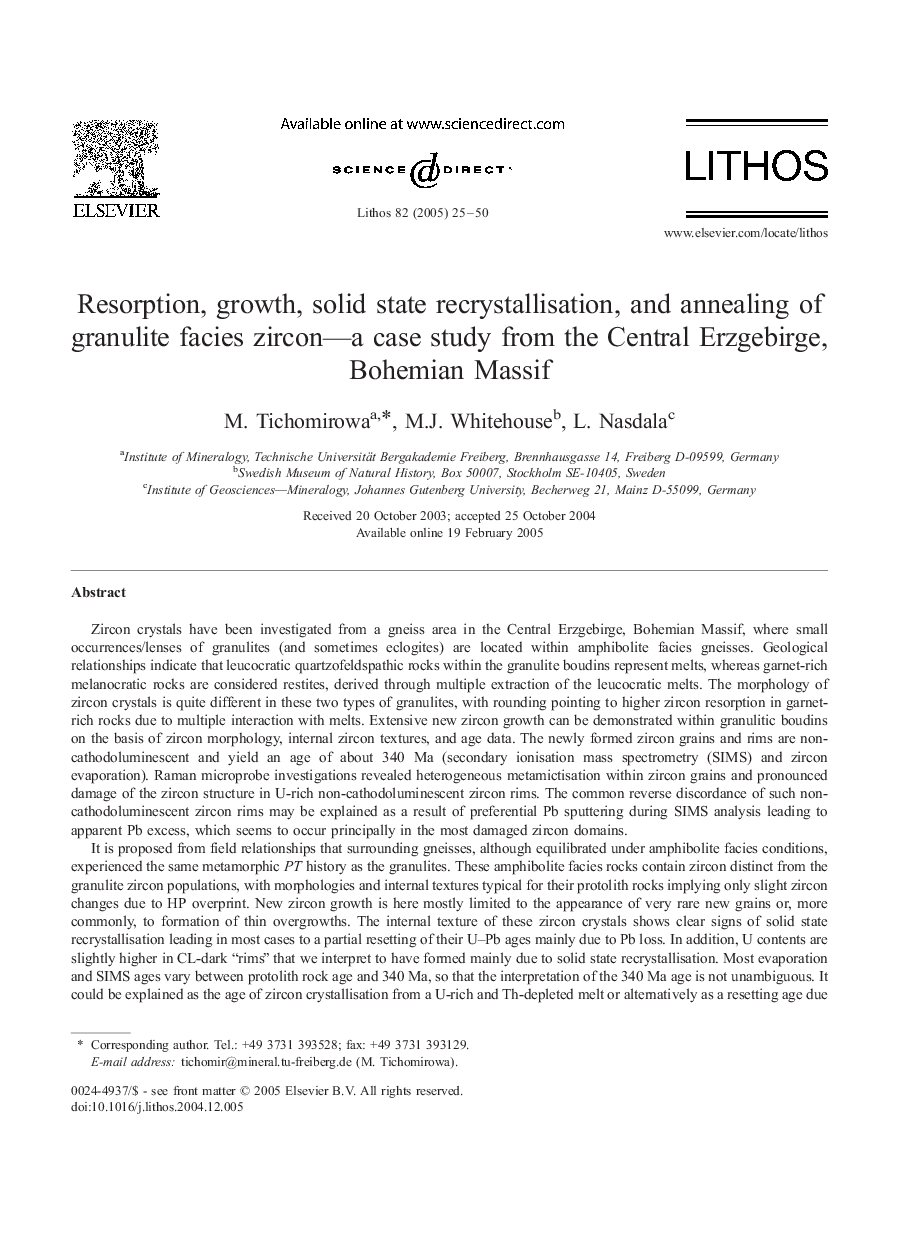| Article ID | Journal | Published Year | Pages | File Type |
|---|---|---|---|---|
| 9532026 | Lithos | 2005 | 26 Pages |
Abstract
It is proposed from field relationships that surrounding gneisses, although equilibrated under amphibolite facies conditions, experienced the same metamorphic PT history as the granulites. These amphibolite facies rocks contain zircon distinct from the granulite zircon populations, with morphologies and internal textures typical for their protolith rocks implying only slight zircon changes due to HP overprint. New zircon growth is here mostly limited to the appearance of very rare new grains or, more commonly, to formation of thin overgrowths. The internal texture of these zircon crystals shows clear signs of solid state recrystallisation leading in most cases to a partial resetting of their U-Pb ages mainly due to Pb loss. In addition, U contents are slightly higher in CL-dark “rims” that we interpret to have formed mainly due to solid state recrystallisation. Most evaporation and SIMS ages vary between protolith rock age and 340 Ma, so that the interpretation of the 340 Ma age is not unambiguous. It could be explained as the age of zircon crystallisation from a U-rich and Th-depleted melt or alternatively as a resetting age due to solid state recrystallisation resulting from melt or fluid interaction with old zircon. It is difficult to determine at which stage of metamorphic evolution new zircon growth occurred in the granulitic boudins, and remains unclear that zircon growth occurred at peak metamorphic conditions.
Related Topics
Physical Sciences and Engineering
Earth and Planetary Sciences
Geochemistry and Petrology
Authors
M. Tichomirowa, M.J. Whitehouse, L. Nasdala,
